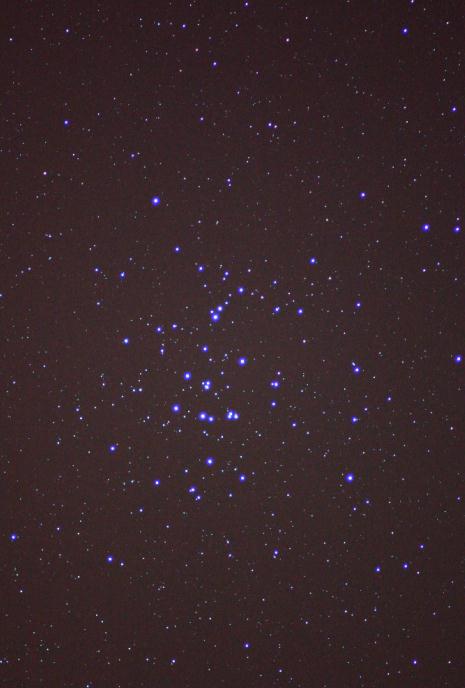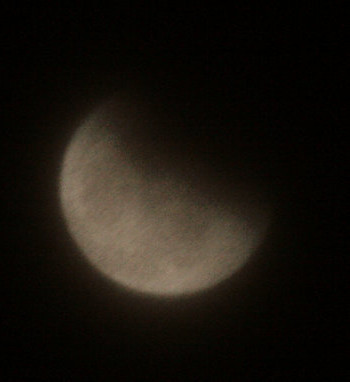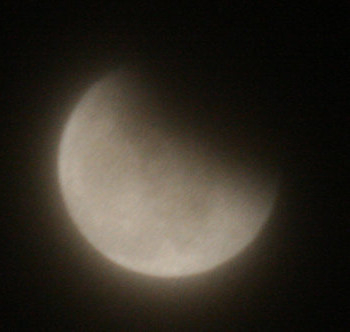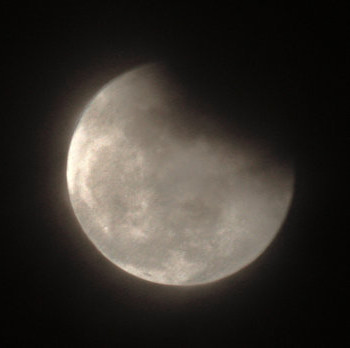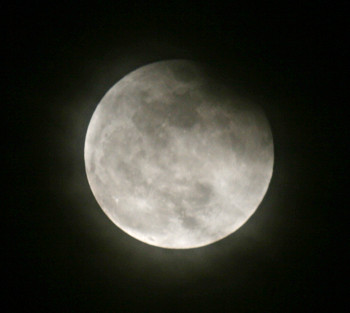I arranged with my buddy Dave to use his back field for the MM on march 17th. He turned off all the lights on the buildings, providing a pretty dark sky.
I could see lights on houses about 400m away but they were pretty easy to ignore. One advantage was that standing near the corner of a building allowed me to be out of the wind.
I have 15×70 binoculars, and planned to only search for the Messier objects designated as visible in binoculars. The binocular mount attached easily to my tripod and did a magnificent job, but it turned out I had neglected 2 important preparations… my pocket sky atlas was in another vehicle, and my red flashlight is still just a twinkle in my eye. As a result, my eyes never got properly dark adapted, and this might have been a factor at spotting some objects. I figured that limiting my efforts to the binocular objects would partly compensate.
However, I did have wall-socket power, and a back-up sky chart book, “Seasonal Star Charts” by The Nature Company (#420) – it has a star wheel on the front, and 8 charts inside… although it did not have a Messier index. I got it at a used book store several years ago, for $3.79 and its value greatly exceeded its price. Unfortunately, it lacked an index, but did list the Messier objects with descriptions and magnitudes, on a per constellation basis. I had to select a number, flip through the various tables and charts, identify the Messier Objects, and then check my list to see if I had a hope of finding them in binoculars. Later I tried selecting a constellation I could see, and looking in the book for what’s available. I re-found a few that way later in the evening, to my chagrin.
My MM got started well before 8pm, with M31 being the first target, as I was of the opinion that it would be setting first. I watched Orion emerge from the blue sky. There was still some sky-glow at northwest direction, and the charts did not offer enough reference to really zoom in for a while. M33 was beyond my ability… with the sky-glow and haze, I could not locate enough visual stars that were on my map to know I had the field right.
I eventually pinned M31 down, and learned a few techniques for star hopping, based on interpolation from Cassiopeia.
Carrying on, I proceeded down the list, more or less in the order they are listed, looking up each on the charts and then planning an approach that made sense. Without a flashlight, I had to figure out what to do, return to the binoculars, and operate from memory. My star charts fit the northern sky into 8 pages, and as a result many binocular stars were not on them.
That’s always the case with any chart, but I would have liked a few more illustrated stars in the binocular field, to help ensure I was on target.
Staying awake was no problem, and the cold did not bother me much either.
I had a chance to use my snow suit to good advantage. One important thing I learned, is that it’s best, when using binoculars, to seek the targets that are not at the zenith. I think a crafted list would recommend the best range of times to look for each.
I managed to fish up 46 Messier objects last night, out of a possible 59. I only found a few in the last 2 hours though, and eventually with the sun coming up the stars started to disappear at about 6:30 am. By then the cows were milked, and it was time to consider breakfast, but the local diner only opens at 8 am. Those that escaped my effort were M33, M79, M78, M94, M53, M64m M83, M49, M23, M55, M15, and M30. Some for lack of ability to find on the charts, some for lack of ability to see something when I was pretty sure I was in the right place. M48 was listed twice in my charts, implying that at least one other one was missing. I found one of the M48’s.
My star hopping skills are much better today than 24 hours ago. I can look in the sky and place the binoculars pretty close to the target. If constellations are reasonably high in the sky I can recognize them and also make sense of which stars are likely to be on the map. Making triangles is my specialty. At least my map had all the visual stars on it.
Next time I could probably fish up about 55 of them, especially with a more detailed star chart. Some of them, I am pretty sure I had the right field, but saw nothing. For others there were insufficient guide stars available to hop.
I thought about going to the alternate site, but I guess I did best to remain at the farm. It was sheltered from the wind where I set up, and that helped a lot. I guess I will try the alternate site at least once to compare the light pollution, and for access to the horizon. I would say the limiting unaided visual magnitude at the farm was about 3.8. It never got dark enough there that I could not see the ground or the tripod.
I can see from Mike’s post that the cause was haze in the sky. I am comforted by this, as it implies the farm is perhaps a better place than it appeared, when sky conditions are better. I would be interested to know how the sky looked elsewhere last night.
The ground was frozen enough to walk far afield, but I did not want to be in the wind, and in general I could fish up most objects by repositioning to avoid the barn if needed.
The binocular-holder gadget I bought from Mike worked very well. I could not have done without it. I think perhaps 10×70 binoculars would gather a bit more light than the 15×70 I have.
Before I read about the haze (see below), I thought it’s time to shop up some binoculars with skyglow filters designed into them. Also hoping a lower magnification would add some brightness to the dimmer stars and objects. For sure, I will continue to use them to see how well they do in better conditions.
I think the MM is a great way to learn star hopping and also to learn a lot of constellations. Fishing up the ones I found last night next time will be the true test of that learning, but more than that, just being able to recognize the constellations and gauge distances on charts is the best reward.

